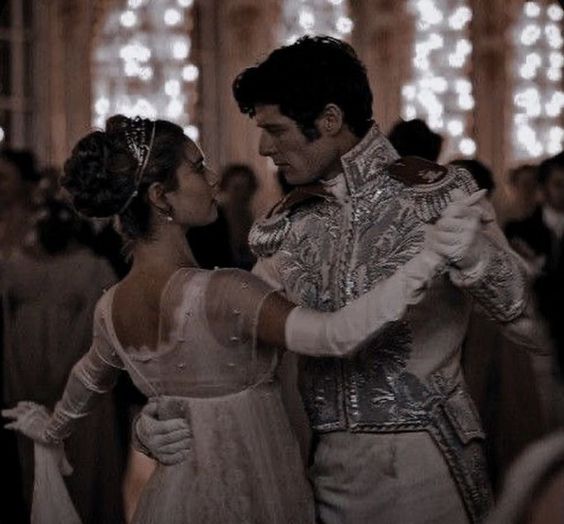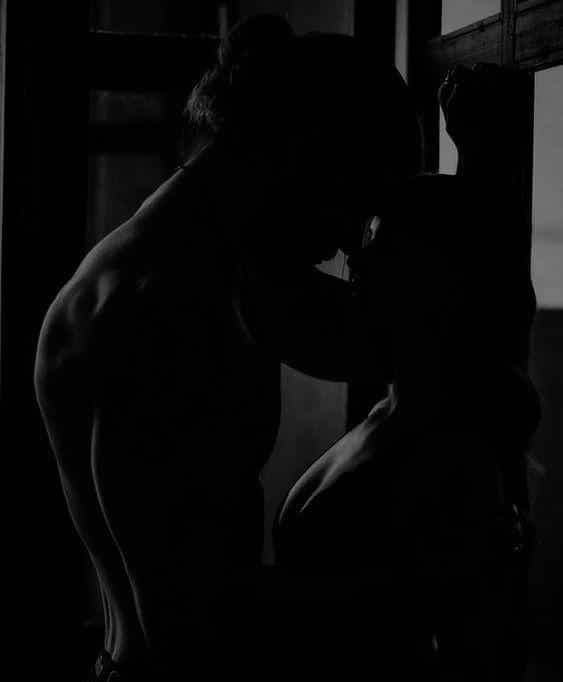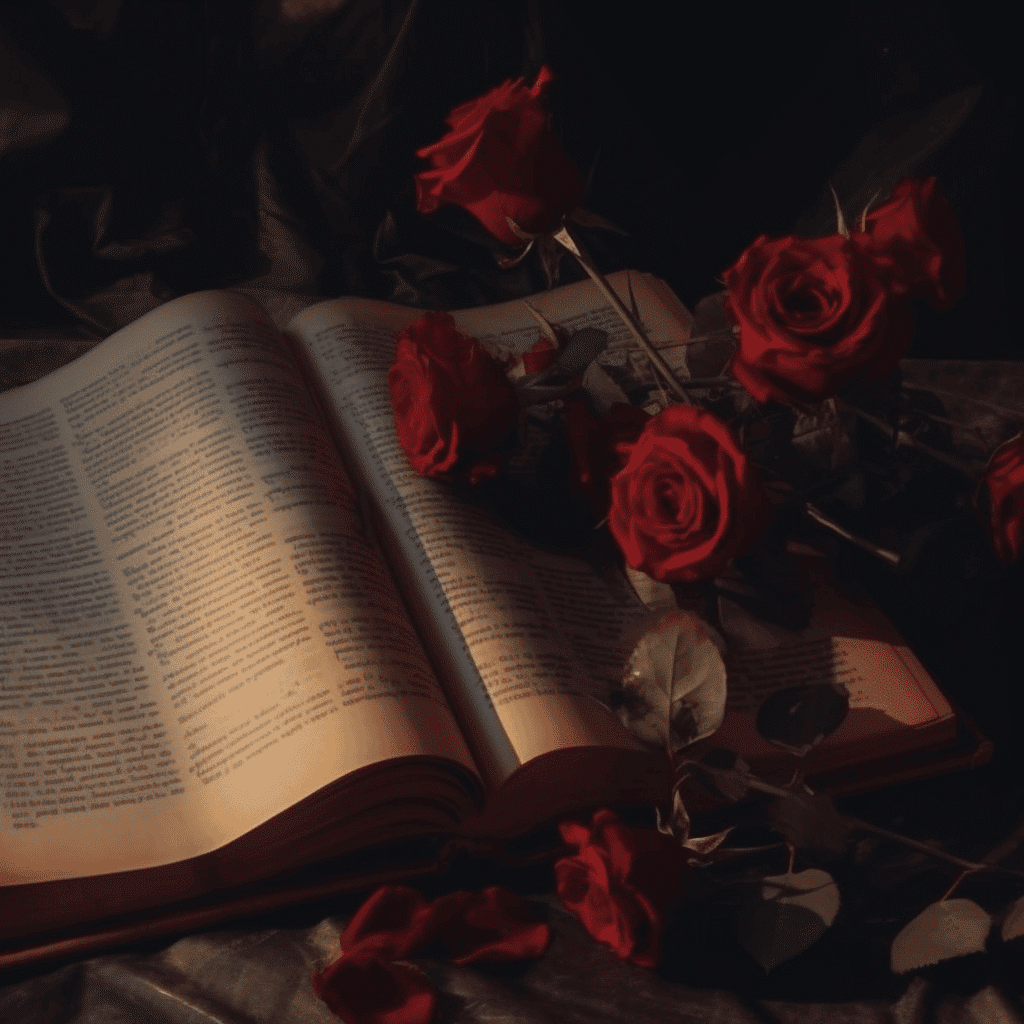
I’m in a dimly lit bar, swallowed up by the crushing noise, the dizzying whirl of bodies, the stench of spilled beer and cheap cologne. Yet, in this chaos, I feel his eyes on me, as palpable as the weight of the leather jacket clinging to my shoulders. His name is Damien. He’s sitting at the far end of the bar, a lone figure amidst the revelry, his aura a swirling vortex of danger and allure.
His eyes burn into me, a relentless probe that sears through the thin fabric of my dress, leaving trails of fire on my skin. His gaze is unyielding, a silent demand for submission, an insidious invitation that curls around me like a predator ready to pounce. I watch as his tongue swipes over his bottom lip, a predatory gesture that sends a tremor coursing through me, pooling heat in my lower belly.
It’s the way his muscles coil under the tight black shirt as he leans back, legs spread wide in a display of unabashed dominance. It’s the way his fingers drum on the glass of bourbon he’s nursing, a rhythm that resonates with the wild beat of my heart. It’s the forbidden allure that draws me towards him, like a moth to a fatal flame.
That, dear readers, is sexual tension.
That delicious, palpable energy that electrifies the air between the two characters, creating a connection that’s impossible to ignore.
It’s one of the most powerful tools in a romance writer’s arsenal, capable of transforming an ordinary story into a passionate, heart-pounding rollercoaster ride.
And in this blog post, we’re going to dive into exactly what sexual tension is, how to build it, and how to use it to make your romance scenes sizzle.
Follow me!
Setting the basics: What is sexual tension?

Sexual tension is a sense of desire or anticipation between two characters, often marked by physical attraction, emotional connection, or both.
It’s the magnetism and energy that arises when there’s potential for a romantic or sexual encounter, but some obstacle or issue prevents the consummation of that desire.
It’s the push and pull, the will-they-or-won’t-they that keeps readers intrigued and invested in the characters’ relationship.
At its core, sexual tension is about desire and delay.
In the context of storytelling and character development, sexual tension plays several critical roles:
- It builds anticipation: As the tension between the characters grows, so does the readers’ desire for resolution, which keeps them turning the pages.
- It illuminates characters: How a character experiences and reacts to sexual tension reveals a lot about their desires, fears, and vulnerabilities. It’s a tool that can be used to add depth and complexity to your characters.
- It shapes the narrative arc: Sexual tension drives the story forward, providing a basis for conflict, complication, and resolution. It follows a trajectory that aligns with the narrative arc of many stories: the buildup, the climax, and the resolution.
Sexual tension is not:
- Just about sex: Sexual tension and sex are not the same. A story can be loaded with simmering tension even if it contains no explicit sex scenes. Sexual tension is about attraction and anticipation, and it’s a vital component in both sweet and steamy romances.
- A matter of choice: In romance, the electric undercurrent of attraction between characters isn’t optional; it’s essential. It’s the tension that keeps readers glued to the pages.
- Equivalent to love: Characters can experience potent sexual tension and not end up in love or in a committed relationship. For example, in stories with love triangles, there can be a significant spark between characters, but a clear love interest prevails unless the genre or trope specifically revolves around polyamory or reverse harem.
- Exploitative: Sexual tension should never be used to rob a character of their voice or consent. It should always respect the boundaries of each character, serving as an exciting buildup, not as an excuse for abusive behavior.
What does sexual tension feel like?
Sexual tension can feel like an electric charge in the air.
It’s a heightened awareness of the other person, a sense of anticipation, and a strong desire to be closer to them.
Physically, it may manifest as a quickening heartbeat, a fluttering in the stomach, or even a feeling of warmth or tingling.
Emotionally, it can feel exhilarating, nerve-wracking, and sometimes even a bit frustrating due to the uncertainty of whether the feeling is reciprocated.
Conversations can feel like a playful game of words where both parties might flirt or tease, pushing boundaries while also maintaining a certain distance. There’s an element of challenge, a dare to take a step further, a desire to explore the potential between the two of you.
Moreover, there’s an underlying layer of anticipation – a longing for more, for the ‘what could be.’
This anticipation fuels the tension, makes every interaction charged and meaningful, and can often lead to a sense of frustration if the desire remains unfulfilled for a prolonged period.
In the end, sexual tension feels like a delicious torment of sorts – a tantalizing game of push and pull that can lead to immense satisfaction when the tension is finally released.
Your goal as a writer is to make readers feel all of that. And I’ll show you how. 🌹
Types of sexual tension

Sexual tension can take several forms, depending on the characters involved and the dynamics of their relationship. You can classify it in many ways, but here I’ll go with the Positive and Negative categorization.
Positive sexual tension
Positive sexual tension is characterized by mutual desire, respect, and anticipation.
Both characters are attracted to each other, and, although obstacles may prevent them from immediately acting on their desires, the underlying feeling is one of excitement and hopeful expectation.
The tension stems from the longing for resolution and fulfillment of this mutual attraction.
Some of the popular examples are:
- Mutual secret attraction: Two close friends are secretly attracted to each other. They flirt subtly and enjoy each other’s company but are careful not to cross boundaries, fearing it might ruin their friendship. Example: Lilly and Atlas from It Ends With Us by Colleen Hoover.
- Slow burn love: A couple meets and feels an immediate connection but decides to take things slow, enjoying the journey of getting to know each other. The tension here is in anticipation and longing, as they wait for the right moment to express their feelings.
- Rekindled love: Two ex-lovers cross paths after years apart and realize they still have strong feelings for each other. The tension arises from their past history and the uncertainty of whether they can rekindle their relationship. Also Lilly and Atlas.
- Long-distance yearning: Two characters meet and feel a strong connection but live in different cities or countries. Their meetings are rare and treasured, and they anticipate the next one.
- Co-workers in secrecy: Two characters work together and are attracted to each other, but office romance is discouraged. Their stolen glances and secretive interactions at the workplace heighten the tension.
- Long-lost friends: Characters who were childhood friends meet again as adults and find they’re attracted to each other. Their shared past and newfound feelings lead to a deep, simmering tension.
- Soulmate connection: Characters feel an intense, almost mystical connection upon meeting, but decide to take time to explore it. The delay in their union builds anticipation and tension. An example is Feyre and Rhys from ACOTAR series by S. J. Maas.
- Adventure partners: Characters on a thrilling journey or mission together develop mutual feelings. Their life-or-death circumstances amplify their attraction.
- Reluctant protector: A character is tasked with protecting another and they initially clash, but as they spend time together, they find themselves attracted to each other. Think Bryce and Hunt from Crescent City Series by S. J. Maas.
Negative sexual tension

This is the more popular and exciting trope. 😇
The enemies to lovers, stalker stories, forbidden fruit, and love triangles.
Negative sexual tension is characterized by unrequited desire, conflict, or discomfort. While there may still be a strong element of attraction, it’s complicated by factors that introduce negativity or unease.
Popular examples of negative sexual tension in literature are:
- Unrequited love: One character harbors intense feelings for another, who sees them only as friends. This leads to internal angst and tension for the one in love, as they grapple with their unreciprocated feelings.
- Love/hate relationship: Two characters share a turbulent relationship where they constantly argue and clash. There’s an undercurrent of attraction, but their disagreements often overshadow it, creating negative tension. Example is Jude and Cardan from The Cruel Prince by Holly Black.
- Forbidden love: A character develops a strong attraction for someone they shouldn’t—such as their boss, best friend’s partner, or teacher.
- Love triangle: One character is attracted to two others, creating tension as they grapple with their conflicting feelings. Currently popular example is love triangle between Feyre, Rhys, and Tamlin in the Court of Thrones and Roses.
- Reluctant fiancés: Characters are arranged to be married for political or family reasons, but one character is in love with someone else, leading to tension and conflict.
- Unwilling match: In a world where mates are predetermined or matched (such as in some fantasy or dystopian settings), a character is attracted to someone who isn’t their chosen mate.
- Dangerous attraction: A character is irresistibly drawn to someone dangerous, such as a criminal or villain, causing a tense push-and-pull dynamic. A good example is Haunting Adeline by H. D. Carlton.
- Betrayal in love: One character is attracted to their best friend’s significant other, leading to guilt, secrecy, and negative tension.
- Master and servant: A character develops feelings for their servant or employee, creating tension due to the power imbalance and the inappropriateness of the relationship.
- Familial opposition: Characters are attracted to each other, but their families are enemies or rivals, making their relationship taboo and leading to negative tension. Classical example: Romeo and Juliette.
- Crossing professional boundaries: A doctor, therapist, or lawyer develops feelings for their patient or client, creating tension due to the breach of professional ethics.
Signs of sexual tension

The signs of sexual tension in your story can be subtle or overt, depending on the narrative style and the characters involved.
These signs can be portrayed through a character’s thoughts, actions, dialogue, and interactions with others.
Here are several ways you might convey sexual tension in your writing:
- Physical responses: Describe characters’ physical reactions when they’re near each other. This can include increased heart rate, flushed cheeks, a flutter in the stomach, sweaty palms, or other signs of nervousness and arousal.
- Prolonged eye contact: Characters find their gazes lingering on each other, even when they should be focusing on other things. This indicates their mind is more occupied with each other than their immediate surroundings.
- Innuendo and flirting: They engage in playful or suggestive banter, testing boundaries and gauging each other’s responses. This can range from light teasing to more explicit flirting.
- Touching: This could be unintentional (like brushing against each other) or intentional (like a comforting pat, a playful push, or a lingering handhold). The character’s internal reaction to this contact can reveal a lot about their feelings.
- Body language: Non-verbal cues like leaning in, mirroring each other’s movements, or constant fidgeting show that characters are subconsciously drawn to each other.
- Frequent thoughts: They constantly thinks about the other person, even in unrelated situations, indicating they’re heavy on their mind.
- Jealousy: Characters feel a pang of jealousy when they see the other person interacting with potential romantic rivals. This leads to possessiveness or attempts to monopolize the other person’s attention.
- Awkwardness or nervousness: The tension between characters makes them act awkwardly around each other, stumbling over their words, or behaving out of character.
- Increased attention to detail: They notice small details about each other, like the scent of their perfume, the color of their eyes, or the way they laugh.
- Sexual fantasies: Characters have explicit thoughts or dreams about the other person, which can clearly indicate underlying sexual tension.
- Subtle lip biting: They might bite their lip while looking at the other, showing their anticipation or desire.
- Vivid dreams: Characters have vivid, erotic dreams about each other.
- Intense staring: They find themselves helplessly gazing at the other’s body or focusing on specific features they find attractive.
- Imagining scenarios: They daydream or fantasize about kissing, touching, or more intimate encounters with the other person.
- Intimate conversations: Characters find themselves sharing personal details, dreams, fears, or past experiences, creating an emotional intimacy that heightens their sexual tension.
- Excuses to be alone: They create opportunities to be alone together under the guise of studying, working on a project, or some other pretext.
- Increased sensitivity: Their senses become heightened around the other person.
- Sudden silence: Conversations might often fall into heavy, charged silence, where words seem unnecessary or inadequate.
- Noticing changes: Characters might notice small changes in each other, such as a new hairstyle, a change in fashion, or a slight shift in behavior.
- Jokes and laughter: Sharing private jokes and laughing together can indicate a deep connection and underlying tension.
- Adjusting appearance: Characters might frequently check or adjust their appearance around each other, showing their desire to impress.
- Seeking approval: Characters might seek validation or approval from each other, indicating their desire for the other person’s opinion.
- Defending each other: Characters might frequently defend each other, showing their deep care and loyalty.
- Playful arguments: Characters might engage in playful banter or arguments, creating a dynamic, spirited interaction.
- Passionate disagreements: Characters have passionate, heated disagreements that showcase their intensity and passion.
- Hidden gifts: Characters might give each other thoughtful, personal gifts that show they know and understand each other well.
- Avoiding other potential partners: They show a lack of interest in other potential romantic partners, indicating their mind is occupied by one person.
Words and phrases that create instant sexual tension

In case you’re struggling to build sexual tension, here are some phrases to get you started:
And, here are some dialogue lines that will make both the character and reader tense and squirm:
- “I can’t stop thinking about you.”
- “You look stunning.”
- “Do you feel this too?”
- “I’ve never met anyone like you.”
- “I love the way you look at me.”
- “You drive me wild.”
- “Your touch is electrifying.”
- “I can’t control myself around you.”
- “I’ve been dreaming about you.”
- “Just being near you is intoxicating.”
- “I crave your touch.”
- “You make me nervous in the best way.”
- “I can’t help but want you.”
- “Your lips are so tempting.”
- “You make it hard to concentrate.”
- “I’ve been waiting for this moment.”
- “There’s something magnetic about you.”
- “I can’t resist you.”
- “You’re a distraction I’m willing to have.”
- “I can hardly breathe when I’m around you.”
- “I’m addicted to you.”
- “The anticipation is killing me.”
- “Every inch of you is perfect.”
- “Your scent drives me crazy.”
- “I long for your touch.”
- “You’re all I think about.”
- “I lose myself in your gaze.”
- “You’ve bewitched me.”
- “You’re intoxicating.”
- “I yearn for you.”
- “I find myself lost in thoughts of you.”
- “You make me feel reckless.”
- “I can’t keep my eyes off you.”
- “You’re so tantalizing.”
- “You’re a dangerous temptation.”
- “You’ve ensnared my senses.”
Here are some words, phrases, and descriptions that can create sexual tension in non-dialogue portions of your narrative:
- A stolen glance
- Heart pounding against his/her chest
- A lingering touch
- Throaty laughter that echoed in his/her ears
- Pulse thundering in his/her ears
- A tantalizing proximity
- A brush of his/her lips against skin
- A slow, seductive smile
- Anticipation buzzing under the skin
- A flirtatious wink
- An intimate whisper
- A suggestive lean into personal space
- Skin flushed with desire
- Electric tension in the air
- A playful, challenging grin
- Magnetic pull towards each other
- Eyes that smoldered with unsaid promises
- Hands that explored with daring curiosity
- His/her scent, a heady aphrodisiac
- Soft, lingering caresses
- The heat of his/her body, a potent magnet
- An unintentional brush of their bodies
- The allure of the forbidden
- Breath hitching in anticipation
- A charged silence between them
- The unspoken promise in their eyes
- A provocative shift of his/her body
- The languid slide of his/her gaze
- A daring proposition hung in the air
- The intoxicating pull of his/her presence
- A moment charged with possibility
- The fiery dance of their eyes
- A smoldering look that stripped defenses
- His/her touch, leaving a trail of fire on the skin
- The erotic promise in his/her movements
- The exciting danger of their proximity
- Eyes heavy-lidded with desire
- The intoxicating spell of his/her touch
- Unspoken desires crackling in the air
- A teasing dance of fingertips
- His/her body language, a sensual invitation
- A breathless anticipation that thickened the air
- An irresistible pull of attraction
- A deliciously slow exploration of touch
- The simmering tension of unfulfilled desires
- A provocative, lingering gaze
- His/her laughter, a sweet, potent intoxicant.
Building sexual tension in your story

Creating an enticing, believable sexual tension between characters is both an art and a science.
It’s a delicate balance of character development, conflict, pacing, and subtlety. In this section, I will show you how to craft this vital component of your romance or erotic narrative.
Creating dynamic characters
Character development is the bedrock upon which sexual tension is built. Readers must care about your characters before they can care about their relationship. This requires well-rounded, relatable characters with depth and individuality.
- Character depth: Give your characters distinct personalities, motivations, and histories. Their individual traits should complement and conflict with each other in ways that naturally foster tension.
- Chemistry: It’s not enough for your characters to find each other physically attractive; they must also have a compelling emotional or intellectual connection. This chemistry often comes from shared interests, complementary personalities, or mutual respect and admiration.
The power of conflict
Conflict is the engine of sexual tension. It introduces obstacles that keep your characters apart, amplifying their longing and complicating their relationship.
- Internal Conflict: This can stem from personal fears, insecurities, or past traumas that make a character hesitant to act on their desires. For instance, a character might be attracted to someone but afraid of getting hurt again after a painful breakup.
- External Conflict: This can involve societal expectations, family pressures, or other external factors that prevent your characters from being together. For instance, two characters might come from rival families or different social classes.
Here are some examples of conflict:
- Social class or status: One character is from a high social class or is a celebrity, and the other character is from a lower social class or an average person. This difference in status can cause misunderstandings, prejudice, and challenges in their relationship.
- Different goals or ambitions: One character dreams of traveling the world and experiencing new cultures, while the other prefers stability and wants to stay close to home. Their differing life goals can cause tension and conflict.
- Secret identity or double life: One character leads a double life or has a secret identity, creating tension when their love interest is unaware of it.
- Competing interests: They are competing for the same job promotion, academic award, or sports title. Their competition fuels the tension between them.
- Past relationships: One character still harbors feelings for their ex or is going through a painful breakup, causing conflict in their new relationship.
- Family expectations: One character’s family disapproves of their love interest due to prejudice, cultural differences, or past grievances, adding strain to the relationship.
- Personal insecurities or trauma: They carry personal insecurities or past trauma that prevents them from fully committing to the relationship.
Developing the relationship

The pacing and progression of the characters’ relationship can significantly influence the level and intensity of sexual tension.
- Pacing: Whether it’s a slow-burn romance or an instant-attraction scenario, pacing is crucial. Too fast, and you may not give the tension time to build; too slow, and readers may lose interest.
- Balance of power: Power dynamics can also play a role in sexual tension. This doesn’t necessarily mean one character dominating the other; it can be a playful tug of war, a back-and-forth where each character takes turns taking the lead.
Deploying flirting and subtext
- Subtlety: Sexual tension thrives on what is unsaid or undone. This can involve lingering glances, subtle touches, or flirty dialogue.
- Innuendo and ambiguity: Not every interaction should be laden with obvious desire. Sometimes, a touch of ambiguity can make a scene more tantalizing.
- Dirty talk: This can be a fun and spicy way to ramp up sexual tension. It can show the characters’ sexual desire for each other, and it can also reveal their intimate thoughts and fantasies. Here are some phrases:
- “His words were a carnal whisper against her ear, painting images that sent a rush of heat coursing through her.”
- “Her suggestive retort was a dare, a provocative promise that left him aching for more.”
- “His voice dripped with sinful promises, each word designed to torment and tantalize.”
Utilizing physical and non-physical descriptors
- Physical reactions: Show how your characters react physically when they’re near each other—racing heartbeats, flushed cheeks, a catch in their breath.
- Emotional and psychological reactions: Likewise, delve into their thoughts and feelings—their longing, their confusion, their fear of rejection.
Remember, writing sexual tension is about balance.
Enough tension to keep readers invested, not so much that it becomes frustrating or unbelievable.
And always consider the characters’ motivations, personalities, and histories when crafting these scenes, ensuring the tension evolves naturally with the story.
Conclusion

Writing effective sexual tension is art.
It requires a deep understanding of your characters, their motivations, their desires, and their fears. It requires subtlety, creativity, and a keen eye for details. But most importantly, it requires authenticity.
Authentic sexual tension doesn’t just make your characters’ hearts race; it makes your readers’ hearts race, too. It makes them root for your characters, hang onto every word, every glance, every touch, eager for the moment when the tension finally breaks.
And remember, like any other aspect of writing, crafting compelling sexual tension takes practice.
To write stories that captivate, enchant, and linger long after the last page is turned is the goal of every writer, isn’t it?
Yours truly,
Shadow 🥀